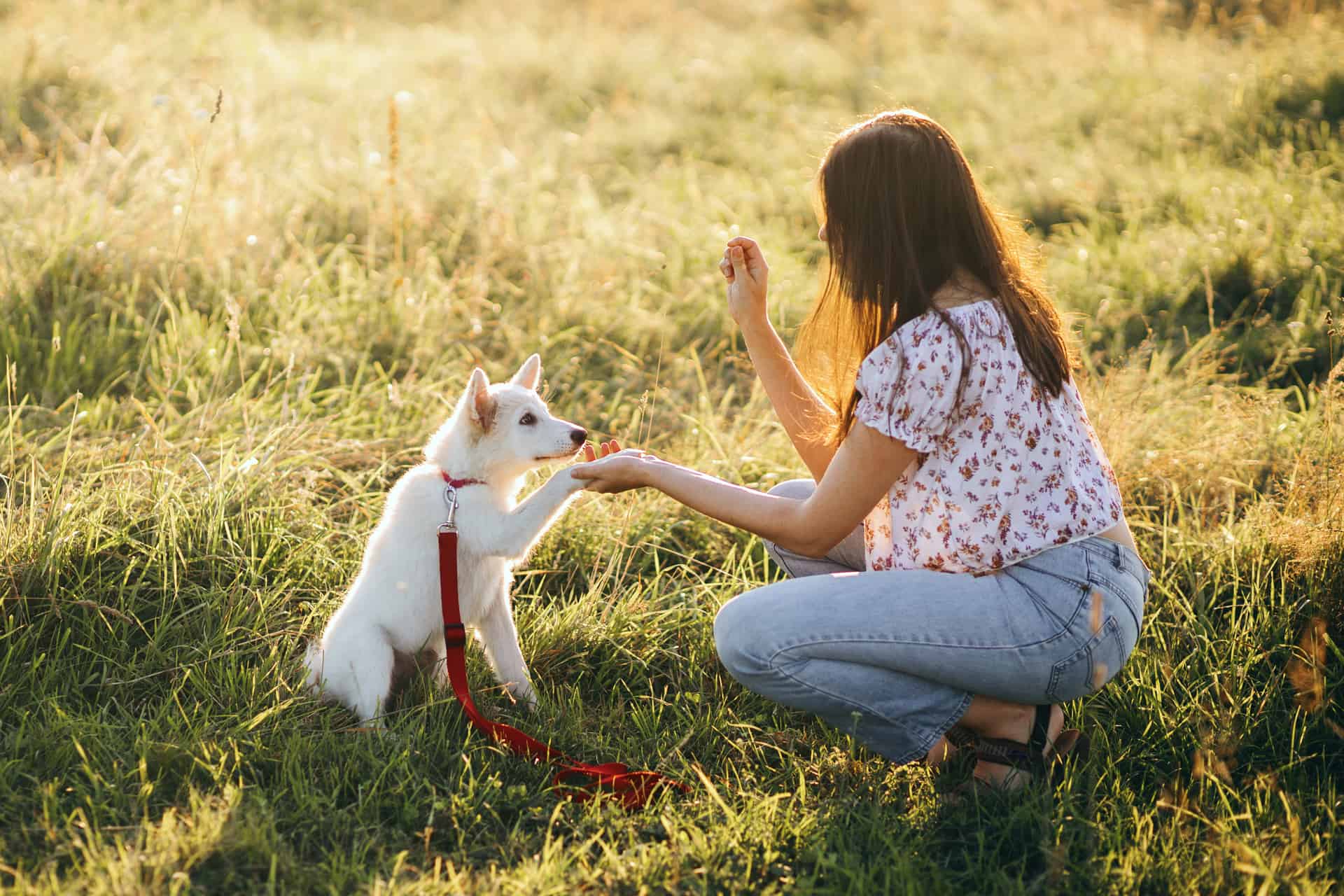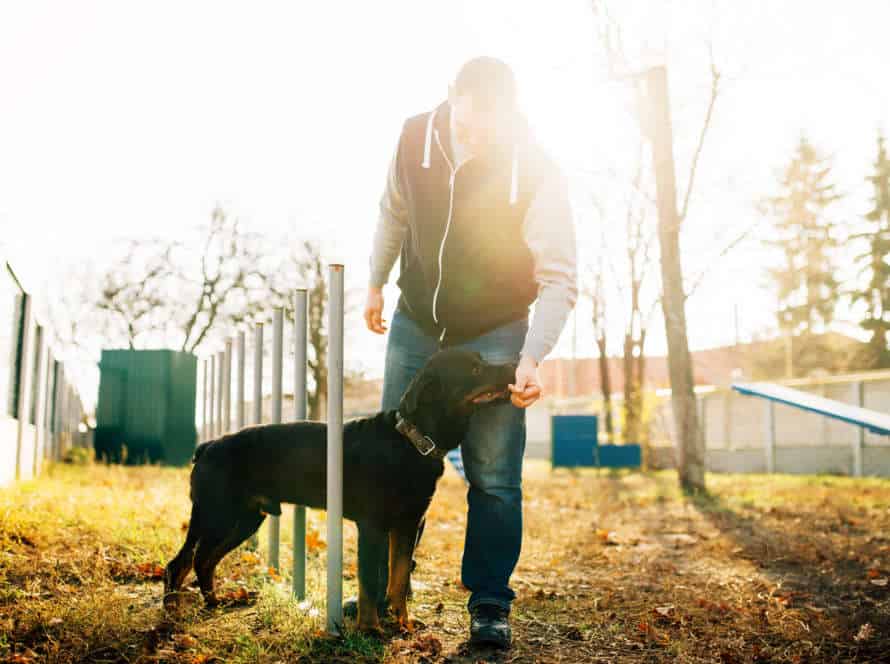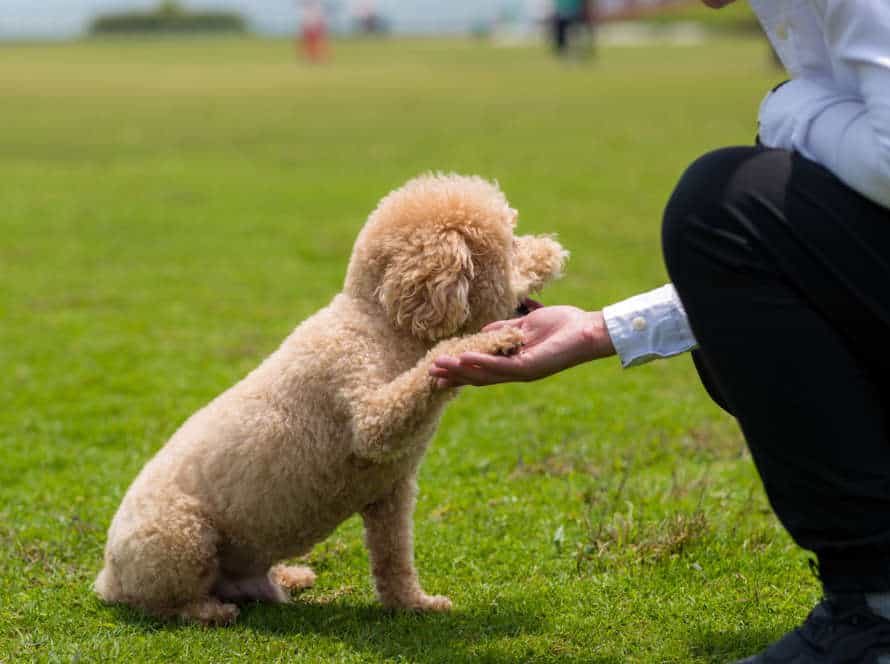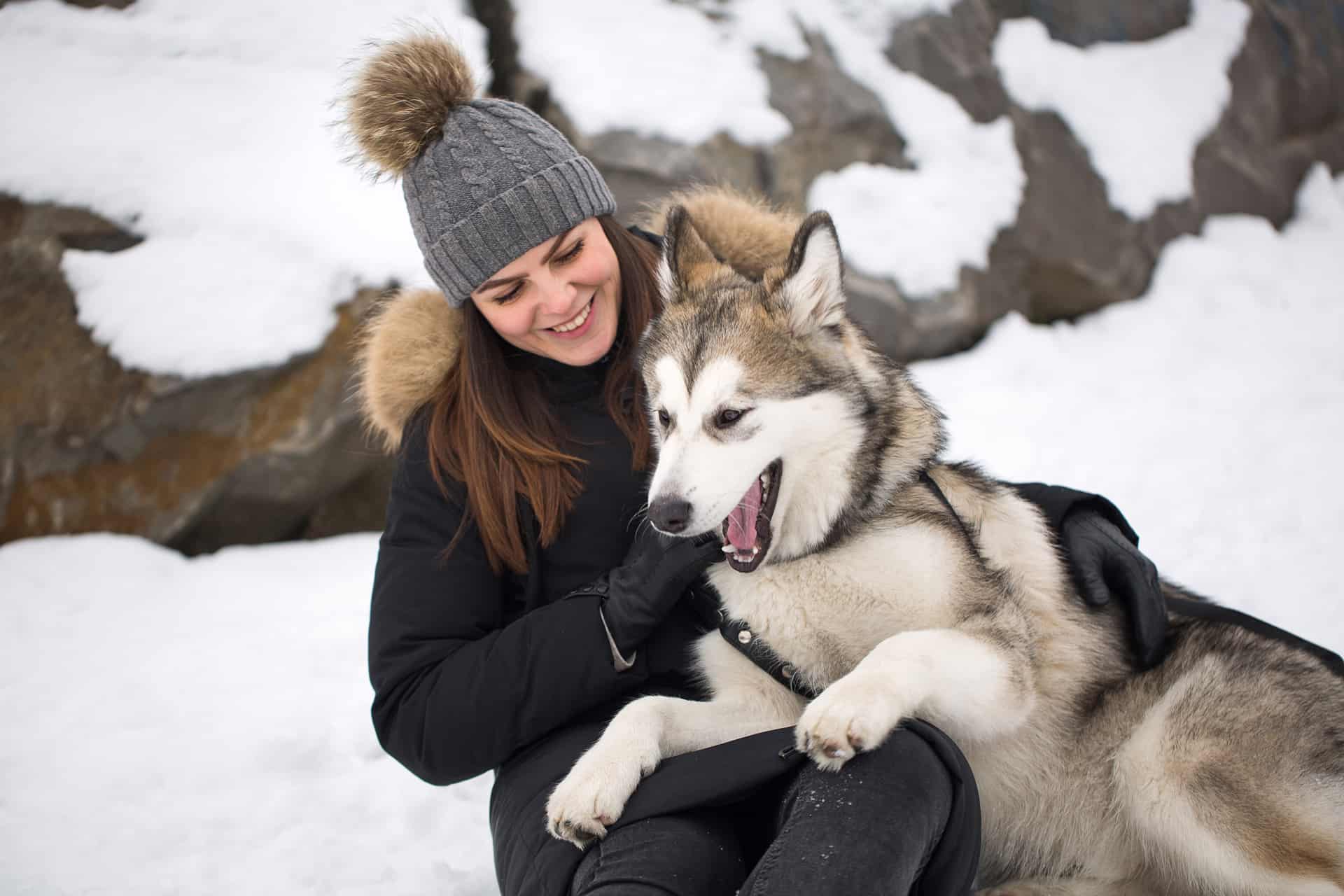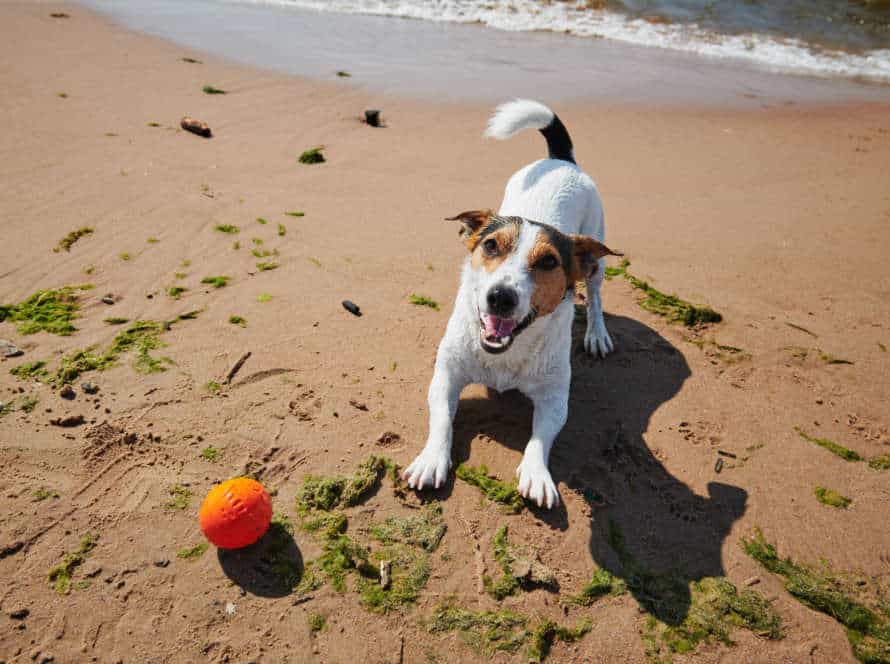Laying the Groundwork: Introducing Basic Tricks to Puppies
Establishing trust is essential when teaching your pup tricks. Here are a few to start with:
- Sit: Hold a treat over their head. Move it behind their head. Their nose will follow and their body will lower into a sitting position. As soon as their bottom touches the ground, give a treat and praise.
- Stay: Ask them to sit. Place your hand in front of their face and say “stay.” Step back and praise them with a treat when they stay in place.
- Come: Hold a treat and call their name followed by “come.” Start close and increase the distance as they get better. Reward success with praise and treats.
Keep training sesh’s short and frequent. Use positive reinforcement. Never punish to train.
Teaching Basic Commands
Teaching a pup the basics is a must for a good owner-pet bond. A pup is like any baby – they need to be taught the rules that will keep them safe and healthy. Fortunately, there are easy commands you can teach your pup from the start.
Let’s check out some of the essentials and learn how to begin.
Introducing Sit, Stay, and Come Commands
Teaching basic commands to puppies is key for starting their training. “Sit,” “Stay,” and “Come” are some of the most important ones. Here are tips:
- “Sit”: Hold a treat above the puppy’s nose, and move it up. This should make them lower their backside.
- “Stay”: Ask them to sit. Put your hand out flat, and say “Stay.” Reward them with a treat after several seconds.
- “Come”: Squat a few feet away, holding a treat. Say “Come.” Give them the treat when they reach you.
Consistency is key. Keep reinforcing these commands with repetition, rewards, and positivity.
Encouraging Positive Reinforcement
Training your puppy can be a fun experience. But you’ll need patience & consistency. Positive reinforcement is key to teaching basic commands & tricks. Here are some tips to help:
- Use positive language & rewards to build trust with your pup.
- Start with simple commands like “sit”, “stay”, and “come”. Provide treats & praise when pup responds correctly.
- Be consistent with training. Practice regularly to reinforce good behavior. Use toys & playtime as rewards. Strengthen bond between you two.
- Remember, puppies have short attention spans. So give them frequent breaks during training.
Using Treats and Toys to Promote Learning
Promote learning and positive behavior in puppies using treats and toys! Teach basic obedience commands, and lay the groundwork for more advanced tricks. Here’s how:
- Pick a motivating treat or toy – like cooked chicken or a chew toy.
- Hold the treat or toy in front of your pup’s nose. Guide them into the behavior you want, like sitting or lying down.
- When pup does it right, reward them with the treat and tons of praise!
- Keep repeating until they master the behavior. Then, reduce treats as the behavior becomes more consistent.
Using treats and toys helps build a strong bond between you and your pup, and makes training fun and engaging!
Encouraging Social Interaction
Socialization is a must for successful puppy training. It’s a vital part of puppies learning to trust their owners. Introduce them to different people and animals in a secure and encouraging way. Start with basic tricks! Here, we’ll discuss all the ways to encourage social interaction with your pup. It’ll help build a trusting and rewarding relationship.
Exposing Puppies to Different Social Scenarios
It is vital to expose puppies to various social situations to make sure they grow into socially-adept adult dogs. Teaching basic tricks is a great way to encourage social interaction. Here is how:
- Start with easy commands like “sit” and “stay”.
- Reward good behaviour with treats or praise.
- Let the puppy slowly explore new places, such as parks and other dogs.
- As they get more comfortable, introduce tougher tricks and commands.
Pro tip: Make sure to always keep an eye on your puppy when it is interacting with others and during training for its safety.
Using Positive Reinforcement to Encourage Play
Positive reinforcement is an awesome way to get young puppies playing and learning social skills. Rewards and kind words are how they learn that playing leads to good behaviour and great outcomes. To get started teaching your pup some basic tricks and encouraging their play, here’s what to do:
- Start small – like with sit, come and stay. Use praise and treats when they obey your commands.
- When you want to make training interactive, use toys and playtime.
- If they follow directions, say something like ‘good job‘ or ‘well done‘ and give them a treat or extra playtime.
- Once your puppy is comfortable with basics, you can teach them more complex commands. And, keep up the positive reinforcement!
Be patient and supportive throughout the training process. Make sure your pup is having fun while learning!
Discouraging Negative Behaviors
Introducing tricks to puppies is a great way to boost socialization and stop bad behaviors. Here’s what to do:
- Teach “sit,” “stay,” and “come.” This helps your pup socialize and follow commands.
- Introduce “shake” and “roll over.” Strengthens the bond with you and your pup, and keeps them busy and mentally stimulated – reducing barking and chewing.
- Use treat-based training to reward good behavior and obedience. Use high-value treats to keep your pup interested.
- Keep training sessions short and fun. End on a positive note to build enthusiasm and a strong foundation for more training.
Crate Training and Housebreaking
Crate Training and Housebreaking your puppy are vital for creating a good start for your pup. Crate Training educates your pup to be at ease and secure when you’re not around. Housebreaking can limit mess and help your pup to understand to do their business outside. Both of these techniques can be employed through uniformity and positive reinforcement. Here’s how to crate train and housebreak your pup:
Introducing the Crate and Associated Commands
Crate training is key for housebreaking pups. You can take the next steps to get ready for crate training and teach your pup some tricks.
Introduce your puppy to the crate in a nice, non-threatening way. Put some treats and toys in it and invite your puppy to go inside.
Once your pup feels comfortable, start with the basics like “sit,” “stay,” and “come.” Reward them for good behaviour with treats and compliments.
Teach your puppy the “drop it” command to avoid them chewing on stuff they shouldn’t or swallowing dangerous items.
Finally, stay patient, consistent and gentle while introducing your puppy to crate training and commands. With time and practice, your pup will be a well-behaved and obedient part of your family.
Scheduling Regular Breaks for Housebreaking
Scheduling regular breaks is key for housebreaking your pup and teaching them good toilet habits. Crate training can aid this process and make it simpler for your puppy to learn. Here are the steps:
- Introduce your puppy to the crate slowly, making it a comfy and secure spot.
- Set up a feeding and drinking schedule and bring your pup outside at set times throughout the day.
- Use a consistent command or cue to show it’s time for your pup to go to the bathroom.
- Encourage your pup to use a certain spot outside for potty breaks and use positive reinforcement to reward good behavior.
- Schedule regular breaks throughout the day, gradually increasing the time between potty breaks as your pup gets more used to the routine.
With patience and consistency, you can successfully housebreak your pup and establish good toilet habits.
Consistent Reinforcement of Good Habits
Consistent reinforcement is key for successful crate training and housebreaking of your puppies. It is an important part of teaching basic tricks. Here are some tips:
- Set a strict feeding schedule.
- Take your puppy outside regularly to avoid accidents indoors.
- Use a crate as a safe and comfortable place for your puppy to rest and sleep, also to limit their access to the house while learning.
- Reward good behaviour with treats and verbal praise, like going outside to pee or following commands.
- Introduce basic obedience training and tricks slowly.
- Reinforce good behaviour consistently and patiently.
- Remember, consistency and patience are essential for successful training and behaviour change in puppies.
Teaching Fun Tricks
Teach your pup some tricks! It’s a great way to bond. Plus, tricks can help your puppy understand their boundaries. They’ll learn self-control and acceptable behavior.
Let’s look at the basics. You’ll need to:
- Pick a trick.
- Teach it to your pup!
Introducing Simple Tricks like Shake, Roll Over, and Speak
When teaching tricks to your pup, start small. Like ‘shake’, ‘roll over’ and ‘speak’. Here’s the drill:
- Shake: Hold out your hand and say “shake”. Lift the pup’s paw a bit and give them a treat. Keep doing it until they do it in response to the cue.
- Roll Over: Get the pup in the lie-down position, facing you. Hold a treat near their nose and lure them to roll over while saying “roll over”. Offer a treat, repeat.
- Speak: Wait for your pup to bark. Say “speak” and give them a treat. When they bark on cue, start phasing out the treats.
Positive reinforcement and patience are key. They need time to learn and master each trick.
Promoting Trick Learning as a Positive Experience
Teaching puppies tricks is a great way to foster their love of learning and connection with their owners. Here are some tips to get started:
- Begin with simple commands like ‘sit’, ‘stay’, and ‘come’.
- Reward puppies with treats to motivate them during training.
- Use positive reinforcement like praise and petting to encourage puppies when they don’t succeed.
- Keep training sessions short and end on a good note.
- With patience, your puppy will become more capable and learn more challenging tricks.
Encouragement of Play and Positive Reinforcement
When teaching puppy tricks, play and positive reinforcement can be effective. Here are some tips:
- Ensure your pup is ready for training – when they are rested and fed.
- Begin with basic commands like “sit” and “stay“. Increase difficulty as your pup gets used to them.
- Positive reinforcements like treats, praise, and playtime will help.
- Keep training sessions short and fun.
- End on a positive note to link training with good experiences.
Frequently Asked Questions
1. When is the best time to start teaching basic tricks to puppies?
It is best to start teaching basic tricks to puppies when they are around 8 to 10 weeks old, as they are more receptive to learning and have a shorter attention span.
2. What are some basic tricks that are easy to teach to puppies?
Some basic tricks that are easy to teach to puppies include sit, stay, come, and fetch.
3. How do I teach my puppy basic tricks?
You can teach your puppy basic tricks through positive reinforcement, using treats and praise to encourage them to perform the desired behavior.
4. How long does it take for a puppy to learn a basic trick?
The time it takes for a puppy to learn a basic trick varies depending on their age, breed, and temperament. However, with consistency and patience, most puppies can learn a basic trick within a few weeks.
5. Can I teach an old dog new tricks?
Yes, you can teach an old dog new tricks! While it may take longer for older dogs to learn new behaviors, they can still learn with the proper training and positive reinforcement.
6. What should I do if my puppy is not responding to training?
If your puppy is not responding to training, it may indicate that they are not ready to learn, or that your training methods need to be adjusted. Consult with a professional dog trainer for guidance on how to improve your training techniques.

